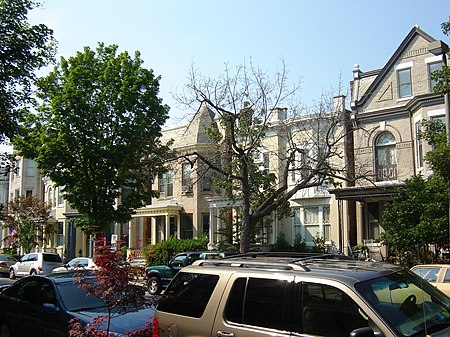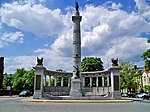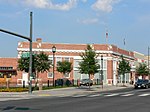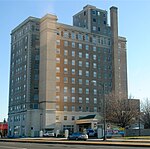Fan District

The Fan is a district of Richmond, Virginia, so named because of the "fan" shape of the array of streets that extend west from Belvidere Street, on the eastern edge of Monroe Park, westward to Arthur Ashe Boulevard. However, the streets rapidly resemble a grid after they go through what is now Virginia Commonwealth University. The Fan is one of the easterly points of the city's West End section, and is bordered to the north by Broad Street and to the south by VA 195, although the Fan District Association considers the southern border to be the properties abutting the south side of Main Street. The western side is sometimes called the Upper Fan and the eastern side the Lower Fan, though confusingly the Uptown district is located near VCU in the Lower Fan. Many cafes and locally owned restaurants are located here, as well as historic Monument Avenue, a boulevard formerly featuring statuary of the Civil War's Confederate president and generals. The only current statue is a more modern one of tennis icon Arthur Ashe. Development of the Fan district was strongly influenced by the City Beautiful movement of the late 19th century. The Fan District is primarily a residential neighborhood consisting of late-nineteenth and early-twentieth century homes. It is also home to VCU's Monroe Park Campus, several parks, and tree-lined avenues. The District also has numerous houses of worship, and locally owned businesses and commercial establishments. The Fan borders and blends with the Boulevard, the Museum District, and the Carytown district, which features the ornate Byrd Theatre. The appearance of the Fan District is frequently compared to that of the Bourbon Street neighborhood in New Orleans although the two places are actually quite different architecturally upon close examination. Main east-west thoroughfares include Broad Street, Grace Street, Monument Avenue, Patterson Avenue, Grove Avenue, Floyd Avenue, Main Street, Parkwood Ave, and Cary Street.
Excerpt from the Wikipedia article Fan District (License: CC BY-SA 3.0, Authors, Images).Fan District
Trouvaille Alley, Richmond The Fan
Geographical coordinates (GPS) Address Nearby Places Show on map
Geographical coordinates (GPS)
| Latitude | Longitude |
|---|---|
| N 37.5525 ° | E -77.465555555556 ° |
Address
Trouvaille Alley
Trouvaille Alley
23220 Richmond, The Fan
Virginia, United States
Open on Google Maps









